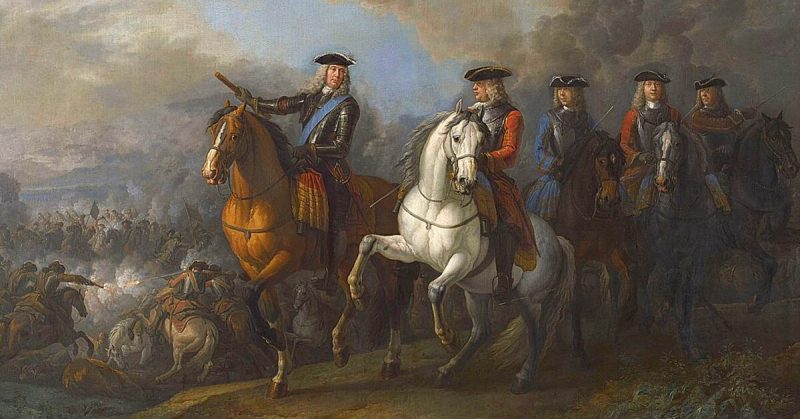John Churchill, the First Duke of Marlborough (1650-1722) is perhaps the greatest commander in British military history. Leading British troops on the continent in the War of the Spanish Succession, he earned glory for himself and his country while shattering the strength of his French foes.
Marlborough’s successes, which included four great battles and thirty sieges, earned him international renown. How was he so successful?
William III’s Army
Marlborough’s great successes came about during his service to Queen Anne (who reigned from 1702 to 1707) but the groundwork had been laid by her predecessor, King William III.
From 1661, England had a standing peacetime army for the first time since the days of the Roman Empire. On taking the throne in 1688, William reformed this politicised and unpopular body of men. He created an effective standing army which, after the Act of Union, would become the bulwark for the whole of the United Kingdom.
Massive Mobilisation
The government’s willingness to spend money on war, combined with these reforms led to a massive army. Britain fielded up to 150,000 men at a time in Europe. Some were unemployed veterans of the Nine Years’ War, some volunteers, and some prisoners forced into military service.
Whatever their origins, Marlborough was never short of men.
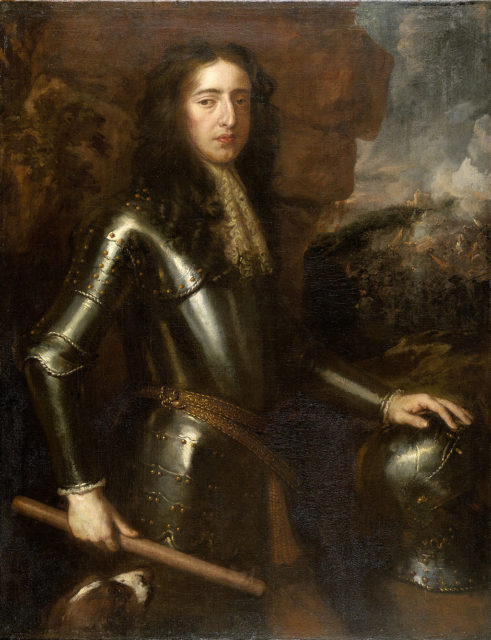
Tactical Manoeuvring
Marlborough was a master of tactical maneuvering. At the Battle of Ramillies, he focused his forces against the thinly spread French. Using a convex formation, he was able to quickly move troops from one area of the line to another, applying his power with swift and focused efficiency.
Bluffing
Marlborough was capable of bluffing when need be. At Ramillies, he moved a large body of troops from one wing to the other. Leaving behind the standard bearers for these units, their flags protruding above a ridge, he tricked the French into believing his forces were still there.
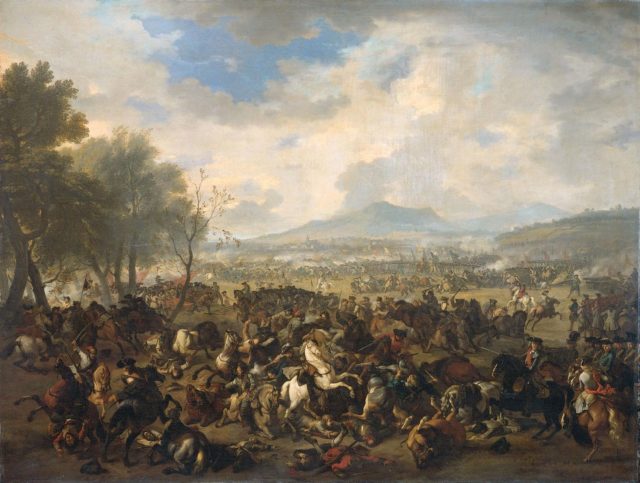
Courage
A man of great personal courage, Marlborough led from the front when it was needed. He had horses shot out from under him and men killed right beside him. At Ramillies, he led his own personal staff in two cavalry charges to hold back the French. In this battle, a cannonball fell so close it killed the equerry who was helping the Duke onto his horse.
Logistical Mastery
Marlborough paid attention to the dull details of keeping an army moving and supplied. His march to the Danube in 1704 included breaks every four days. The troops could rest and bread baked. Supply dumps were set up two weeks ahead of the army, and boots and saddles replaced. It allowed him to march a massive force at incredible speed and reflected organizational skills that kept his armies constantly well supplied.
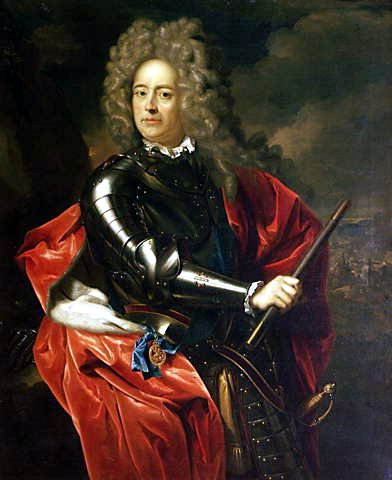
The ‘Secret Committee’
Political influence helped Marlborough to get the campaigns, objectives, resources, and political maneuvers that would best suit him. As part of the so-called ‘Secret Committee’, an unofficial war cabinet that included senior ministers and naval figures, he helped direct British policy until his popularity began to decline in 1709.
Personal Staff
Working in the era before the military general staff, Marlborough recruited and maintained an excellent personal staff for his campaigns. Quartermaster-General William Cadogan organized supplies; Military Secretary Adam Cardonnel tackled diplomatic correspondence; Colonel Holcroft Blood expertly commanded the artillery train; Colonel John Armstrong was the vital aide de camp.
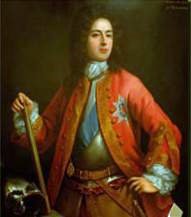
Intelligence Operations
Though usually cautious with his money, Marlborough was willing to spend widely to gain information and find agents in the camps of both his enemies and his allies. Much of this was coordinated by Cadogan, though some was done through personal correspondence. Marlborough also used tricks such as fake deserters to misinform the enemy about his plans.
Changing Cavalry Combat
Marlborough turned his cavalry into shock troops. Taking away some of their pistol ammunition as well as the back plates of their armor, he focussed them on the charge. By deploying them in massed formations, he finished off the enemy in several of his battles, including through a charge by 80 squadrons at the Battle of Blenheim.
Firing Evolutions
Mixed formations of musketeers and pikemen had only recently been abandoned in favour of musketeers with bayonets. The British were quicker to master the implications of this change than the French, allowing the British to fire greater volleys and repeatedly outshoot their foes.
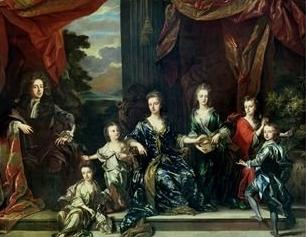
Imaginative Artillery
Marlborough and Colonel Blood used their artillery in imaginative ways. The deployment of two large guns in an aggressively forward position led to the capture of fortified villages at Ramillies. At the battle of Blenheim on the river Nebel, Blood dragged eight guns into marshy ground to contain enemy troops and support a cavalry charge.
Gold
Armies on the march traditionally obtained most of their supplies by force, seizing them from locals. Marlborough instead ensured his armies had enough money to pay their way, especially in friendly and neutral territory. This made people more cooperative, creating a smoother supply process and reducing objections to the army’s activities.
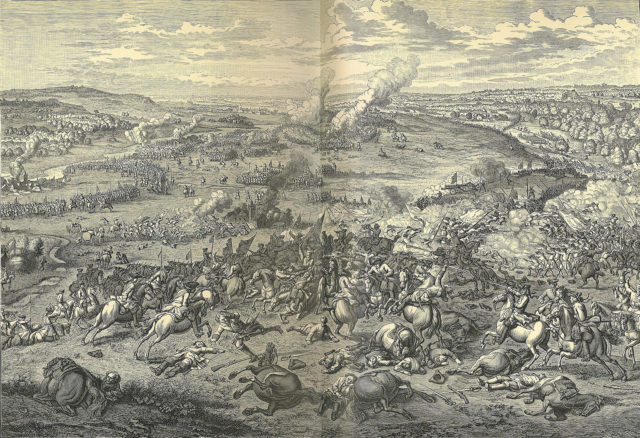
Care for the Troops
Marlborough took care of the troops under his command, paying attention to the details that would make their lives more bearable. He provided handmills for every regiment in 1705, ensured that provisions were well handled, and established hospitals at Nordlingen in 1704. Seeing that he would make the effort for them, his troops made the effort for him, enduring long marches and hard battles. They even gave him the fond nickname of “the Old Corporal”.
Prince Eugene of Savoy
One of the greatest sources of support Marlborough had was Prince Eugene of Savoy, who commanded the troops of Britain’s Austrian allies. The two men worked well together, cooperating closely to achieve success both strategically and on the battlefield. Prince Eugene was co-commander with Marlborough in three of his four great battles. As long as the two worked together, each could be sure that their allies would not let them down.
Sources:
David Chandler (1994), ‘The Great Captain-General 1702-1714, in David Chandler and Ian Beckett (eds), The Oxford History of the British Army.
Richard Holmes, ed. (2001), The Oxford Companion to Military History.
